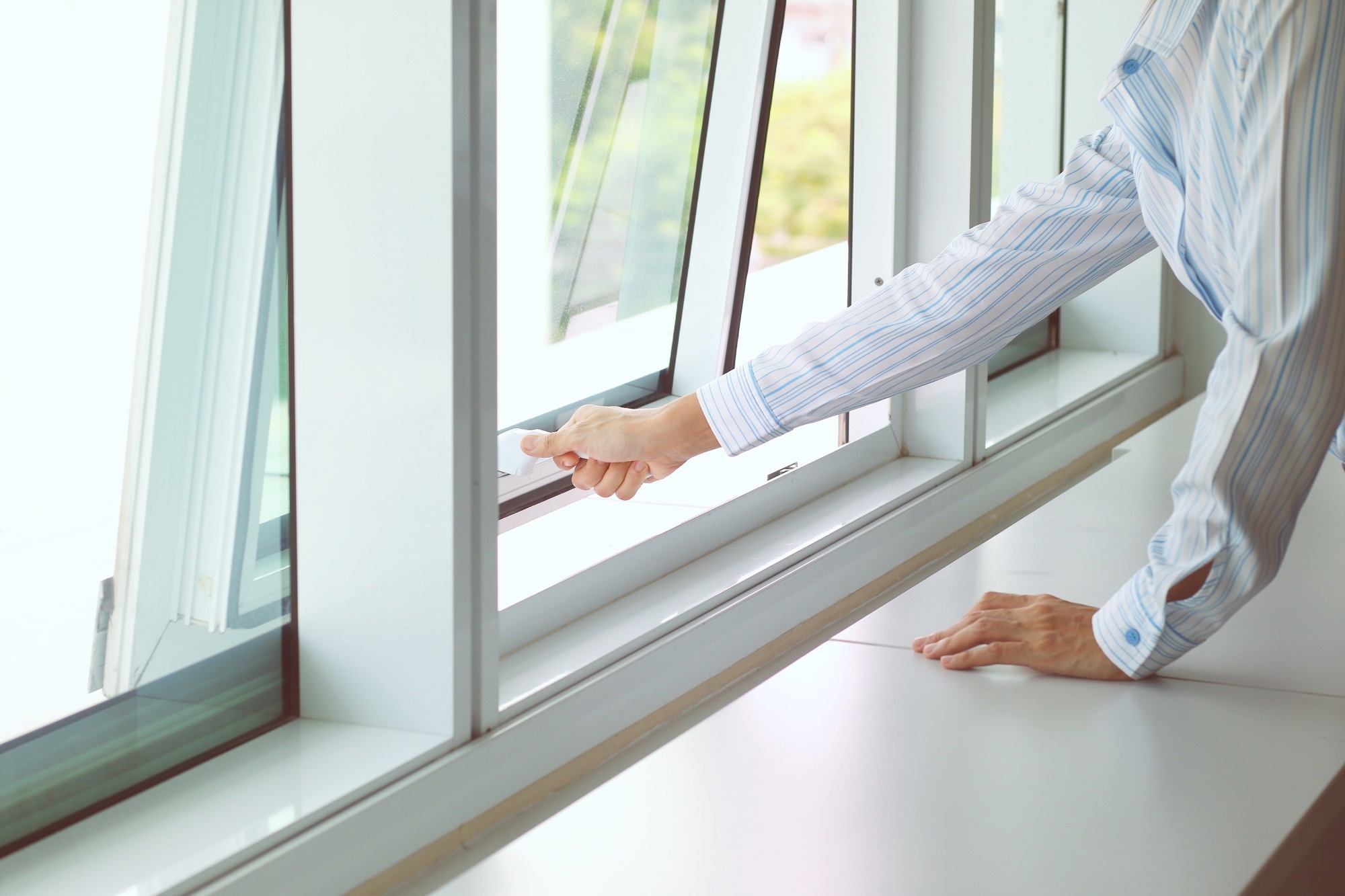They concluded that proper ventilation is essential for reducing infection risk and improving indoor air quality, highlighting the need for better preparedness and public health guidelines in future pandemics.
 Review: Lessons from the COVID-19 pandemic for ventilation and indoor air quality. Image Credit: ToeFoTo / Shutterstock
Review: Lessons from the COVID-19 pandemic for ventilation and indoor air quality. Image Credit: ToeFoTo / Shutterstock
Need for an interdisciplinary approach
Experts have long known that airborne transmission can be a major pathway through which respiratory infections spread. Filtration, ultraviolet (UV) radiation, and ventilation can remove airborne pathogens.
Despite this established knowledge, many health authorities focused on surface cleaning instead of ventilation during the COVID-19 pandemic. Multidisciplinary collaboration in public health can ensure effective and comprehensive responses to airborne diseases.
Open windows are not enough
Around mid-2020, the World Health Organization (WHO) and some public health authorities recognized the ability of SARS-CoV-2 to spread through the air and suggested opening windows for better ventilation.
However, this simple solution is ineffective for many modern buildings that rely on inadequate mechanical ventilation. Additionally, opening windows presents practical issues, such as temperature control, noise, and safety concerns.
A combination of natural and mechanical ventilation and air purification technologies, such as filters and UV disinfection, is necessary to ensure good air quality and reduce infection risk, especially in public and residential buildings.
Building with ventilation in mind
Buildings are constructed for various purposes, but proper ventilation, crucial for health, is often overlooked. The COVID-19 pandemic highlighted the dangers of inadequate ventilation.
Despite past research showing that poor ventilation can cause health problems, improvements have been minimal. The pandemic has emphasized the need for better building design, making good air quality as essential as clean water and food. This requires regular checks and better design considerations for ventilation systems across building types.
Ventilating older structures
Ideally, a building's ventilation system should ensure good indoor air quality and reduce the risk of airborne infections. However, many buildings, especially older ones, lack adequate ventilation and are difficult to upgrade.
Alternative "equivalent ventilation" methods, such as air filtration and germicidal UV (GUV) radiation, can be used. These methods help remove or deactivate pollutants and pathogens. They are not a complete substitute for proper ventilation but can still significantly improve air quality in existing buildings.
Risk assessment methods
During the pandemic, many risk assessment tools for ventilation were developed, but they were often too complex to use in real-time. For example, the Wells-Riley equation, used to estimate infection risk based on ventilation rates, requires specific data on infected individuals and their activities, which is hard to obtain.
While these tools can help estimate infection risk, they are not practical for real-time ventilation control in newer buildings, which also aim to balance energy use, air quality, and cost. Emerging technologies like smart sensors and digital twins, which create virtual models of buildings using real-time data, are being explored to improve ventilation management.
Monitoring ventilation levels
In buildings with mechanical ventilation, airflow can be directed automatically or by inhabitants. There is no precise control over ventilation rates in buildings with natural ventilation.
Ensuring sufficient ventilation is crucial to reduce pollutants and pathogens. Monitoring indoor carbon dioxide (CO2) levels can indicate ventilation quality, as high CO2 suggests inadequate ventilation.
During the pandemic, monitoring CO2 became more common, leading to regulatory measures like Belgium's mandate for CO2 monitoring in public spaces. However, using CO2 as a ventilation proxy has limitations, as it does not account for all factors influencing air quality and infection risk.
Considerations for public buildings
For public buildings, unlike the stringent regulations for food and water quality, few regulations ensure good indoor air quality, even though people spend most of their time indoors.
The COVID-19 pandemic highlighted the importance of monitoring air quality, with many individuals using CO2 monitors to check ventilation. However, this approach is insufficient for public spaces.
Regulations and standards are necessary to ensure adequate air quality, including real-time monitoring of pollutants like fine particulate matter (PM2.5), CO2, and carbon monoxide. While ventilation is a key factor, it should be part of a broader strategy considering indoor and outdoor air pollution.
Some countries have started to consider such regulations for public buildings, but implementation varies and is often hindered by political challenges.
Conclusions
The COVID-19 pandemic exposed serious issues with indoor air quality management, particularly in places like elder care facilities and schools. Ignoring expert advice on ventilation standards was a major mistake.
The pandemic showed the need for better links between science and policy and improved communication about ventilation measures. Enhancing ventilation systems to prepare for future outbreaks is crucial to protecting health and well-being.